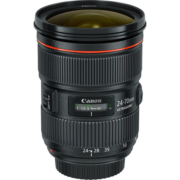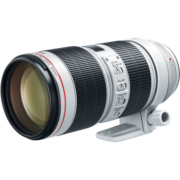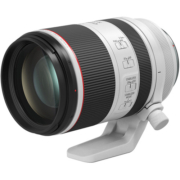I’ve been a fan of Canon DSLR’s ever since I purchased my EOS 7D back in 2010. At the time I was producing a good deal of interview and green screen projects as well as shooting photos for the occasional corporate event. I was initially convinced to take the leap after learning about the cameras fantastic video capabilities. I’ve since added a 70D and 5D Mark IV to my arsenal. They have not disappointed.
Jump fifteen years ahead and I find myself at IBM where, amongst the several video camera options available, I have access to three Canon EOS R mirrorless cameras. Slightly smaller and lighter than my DSLR’s, they have quickly become my go to tools for many shoots.
The Canon DSLR’s use the older EF lens mount, while the newer R-series cameras are built around the RF mount. RF lenses take advantage of a larger mount design, which allows for more compact builds and improved optical performance—often resulting in sharper images and better edge-to-edge clarity. The good news? If you’re switching from DSLR to mirrorless, you just need an EF-to-RF adapter, so you can keep using your trusted EF lenses on your R-series body without skipping a beat.
And now I can finally get to the point of this post. I want to talk about my two favorite lenses, the Canon 24-70mm and 70-200mm f/2.8 zooms.
If you’ve been behind a camera long enough, chances are you’ve worked with these lenses. Canon’s 24-70mm and 70-200mm f/2.8 zooms are the kind of gear that just works. They’re sharp, reliable, and cover the most useful focal lengths in day-to-day shooting. Whether you’re on an older DSLR or a newer mirrorless body, these lenses have earned their spot in just about every professional’s bag.
 EF 24-70mm f/2.8L II USM
EF 24-70mm f/2.8L II USM
This one’s a workhorse. If you’re still shooting with a DSLR like the 5D series, the EF 24-70mm f/2.8L II is hard to beat. It’s super sharp across the frame, gives great contrast, and holds up in tough conditions. I’ve used it for interviews, live events, doc work—you name it.
The constant f/2.8 is great for low light and depth of field, and autofocus is quick and quiet. It’s one of those lenses that does its job without getting in the way, which is exactly what you want when you’re working fast.
 RF 24-70mm f/2.8 L IS USM
RF 24-70mm f/2.8 L IS USM
Canon took everything that made the EF version great and added image stabilization, better close focus, and cleaner edge-to-edge sharpness. All that and it’s smaller. On an EOS R this lens feels incredibly balanced.
The stabilization alone is a big deal if you shoot handheld video. Combine that with Canon’s in-body stabilization and you’re getting smooth, steady shots without a rig. The RF version feels like a real upgrade, not just a port to the mirrorless system.
 EF 70-200mm f/2.8L IS III USM
EF 70-200mm f/2.8L IS III USM
This lens has been around in different forms for years, and it’s still one of the best long zooms out there. It’s fast, bright, and built like a tank. The latest EF version improves on flare and ghosting, and it’s just consistently reliable. Perfect for portraits, live events, sports—really anything where you need reach.
Yes, it’s big and heavy, but you know what you’re getting: gorgeous compression, beautiful bokeh, and fast autofocus that won’t let you down.
 RF 70-200mm f/2.8 L IS USM
RF 70-200mm f/2.8 L IS USM
Now here’s where Canon shook things up. The RF 70-200mm f/2.8 is way shorter and lighter than its EF counterpart, thanks to a new extending design. That makes it way easier to carry, especially if you’re moving fast or traveling light.
It’s just as sharp (maybe sharper), autofocus is blazing fast, and you still get excellent stabilization. I’ve used this for handheld shooting where I wouldn’t even consider bringing the EF version. It’s wild how compact it is for what it can do.
These four lenses cover just about everything you’d need: wide to medium for run-and-gun work, and telephoto for when you need reach and separation. Whether you’re sticking with EF or have moved to RF, the 24-70mm and 70-200mm f/2.8 lenses are still the gold standard for everyday professional use.
I’ve used them in every kind of situation—documentary, branded content, portraits, corporate gigs—and they’ve never let me down. If you’re building or upgrading your kit, this pair is where I’d start every time.
